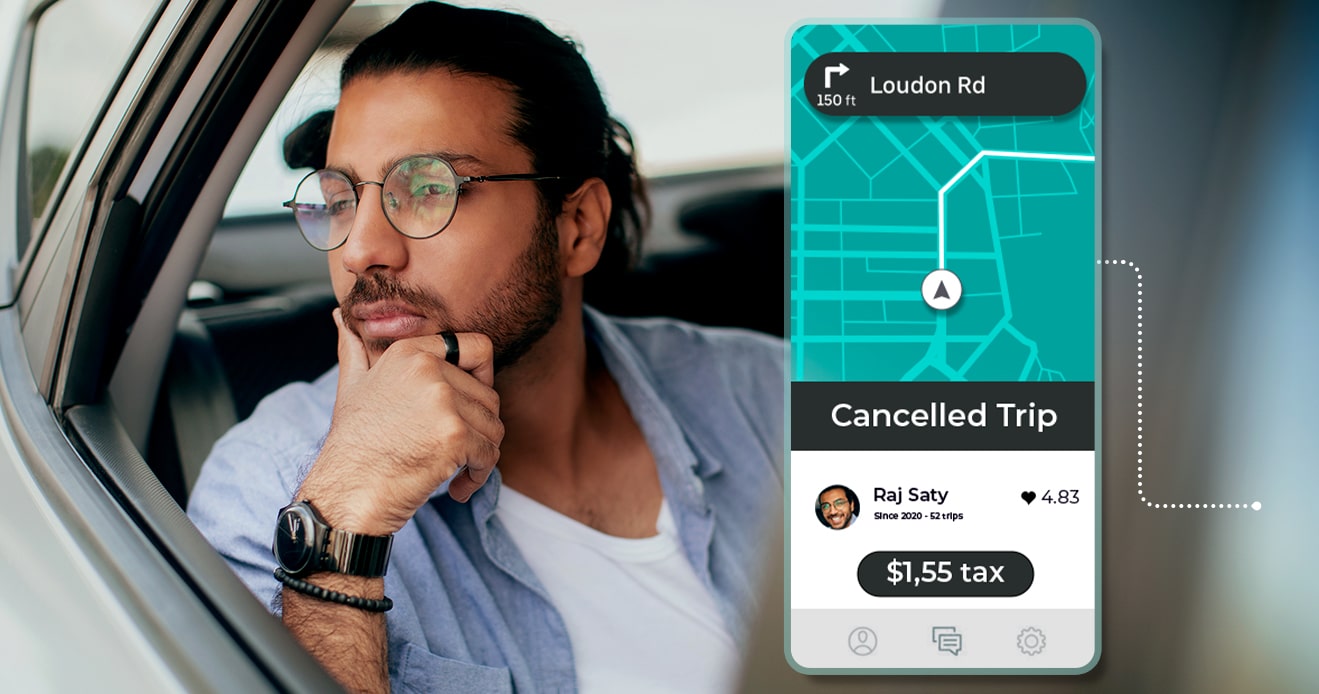- Blog
- Unveiling the Hidden Threat: Tackling 'Off-line Rides' in Ride-Hailing Apps
Unveiling the Hidden Threat: Tackling 'Off-line Rides' in Ride-Hailing Apps
Subscribe to Incognia’s content
Ride hailing apps exist to bring different types of users together—namely, users that need a ride, and users that can provide one. In exchange for connecting these two groups through the app and for taking care of other responsibilities like taxation, safety, and liability, the company takes a cut of each transaction. This naturally makes rides a little more expensive, and not everyone is willing to pay the middleman to get where they want to go.
Understanding “offline” rides
So, what exactly is an offline ride? Offline rides happen when drivers and riders collude, or work together, to cut the platform out of their share of profit for the ride.
For example, a rider might request a ride, and then once their driver arrives, cancel through the app. They could then make a verbal agreement with the driver in person to do the ride for cash instead.
With this sort of arrangement, the rider could pay less, the driver could earn more by not sharing profit with the platform, and there might also be less tax liability than with rides that are documented in the app.
Offline rides can also happen with only one party’s knowledge. For instance, if riders are expecting to pay cash for their ride (an approved practice for apps in some parts of the world), a driver might cancel the ride through the app after picking up their rider and then pocket the full cash payment without the rider ever realizing it.
Impact on Ride-Hailing Platforms:
While offline riding may seem like a win-win for riders and drivers, in reality, it’s a high-risk, low-reward scenario for app users and a lose-lose threat for the ride-hailing app itself.
The policy of only accepting rides through the app provides a level of safety for both drivers and riders that they don’t have when offline riding. Many ride-hailing apps offer real-time ride tracking and dedicated incident response teams to detect and intervene if anything unexpected or dangerous happens during a ride. They might also allow riders or drivers to invite third parties to “follow” their ride for extra safety and accountability. These sorts of features and safeguards simply aren’t available to customers who choose to ride offline.
As one can imagine, offline rides pose a significant Trust & Safety risk. Without the oversight and accountability of rides arranged through the app, there’s less standing in the way of bad actors taking advantage of someone they connect with on the platform. Even though offline rides don’t involve the app during the actual ride, the fact that users connect through the app originally means there’s potential for significant reputational damage if any harm befalls an offline rider or driver.
The safety concerns are the most serious risk of offline rides, but these rides also cost the app money. Ride-hailing platforms have to invest resources into maintaining the app, staying in legal compliance, paying insurance premiums, performing Trust & Safety checks, drawing in new business, and answering support tickets from users. When users take advantage of all the app’s legwork without actually generating any revenue through their ride, the app loses that chance to recoup its expenses and make a profit.
The Incognia Advantage:
Incognia’s team has a lot of experience dealing with collusion.
In one specific case, we identified a Xiaomi device with behavior similar to what appears in devices of people taking offline rides. This single device accessed 199 user accounts through the rider app and also accessed 14 accounts on the driver app. One device, two apps, 213 accounts accessed in total.
One of the main problems with identifying devices and users who operate this way is that they hide their tracks with measures like device ID spoofing and factory resets. This is where Incognia stands out from other fraud prevention solutions—we can detect and identify a device even after a factory reset or an attempt to spoof the ID.
Even if a bad actor switches devices entirely, Incognia’s Location Fingerprinting acts as an additional layer of security that can identify the same bad actor based on their unique location behavior, meaning the way they move around on a daily basis.
Incognia uses a multi-layered approach that means we can identify bad actors and high-risk accounts even when those bad actors try to cover their tracks with measures like multi-accounting, factory resets, or device changes.
Offline rides pose significant challenges for ride-hailing platforms, threatening both their reputation and financial health. And while they may appear as a shortcut to cheaper fares for riders or higher earnings for drivers, they also carry big risks for users. The lack of safety mechanisms and the potential for abuse and legal disputes outweigh the perceived benefits.
Fortunately, with technology like Incognia's Location Fingerprinting and device identification capabilities, ride-hailing apps can more effectively combat the problem of offline rides. These systems uncover the hidden patterns of bad actors even when they try to obscure their actions, ensuring the integrity of the platform and ultimately, the safety of its users. For information about how Incognia can help prevent offline rides, contact us today.




